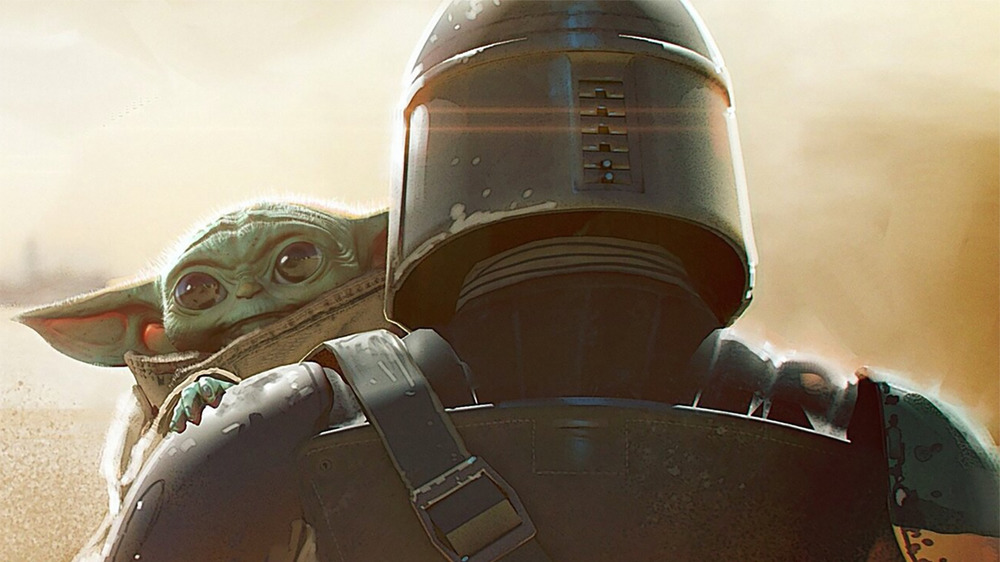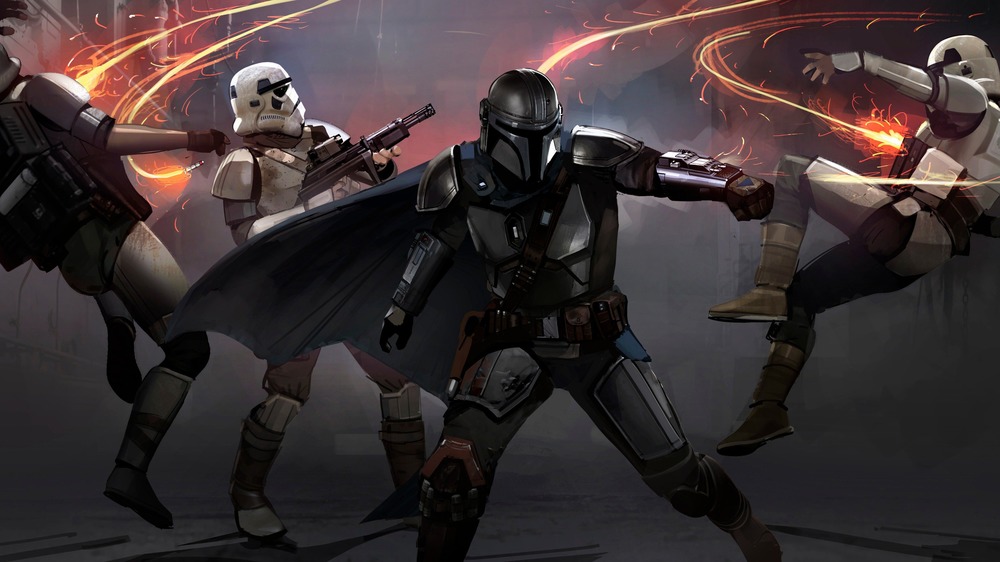Why Making The Mandalorian Is More Challenging Than The Movies - Exclusive
In many ways, The Mandalorian is the most groundbreaking piece of Star Wars media released since The Force Awakens revived the big-screen side of the franchise in 2015. Outside of that one big cameo, it's the first live-action Star Wars project that doesn't tie directly into Episodes I through IX (both Solo and Rogue One are prequels to other movies). And it's the very first live-action Star Wars TV series to get off the ground following the cancelation of George Lucas' still-mysterious live-action TV project, commonly referred to as Star Wars: Underworld.
Naturally, The Mandalorian introduced a whole new set of challenges to those working in the galaxy far, far away. After all, as detailed in Lucasfilm creative art manager Phil Szostak's new book The Art of Star Wars: The Mandalorian, the Mandalorian team wasn't willing to cut any corners when bringing Star Wars to the small screen.
"Executive creative director Doug Chiang and the Lucasfilm art department treat The Mandalorian exactly as we would any one of our feature films," Szostak tells Looper in an exclusive interview. "For all of our projects, we try to ground our work in the foundational aesthetics of the original Star Wars designers — most notably Ralph McQuarrie, Joe Johnston, and Nilo Rodis-Jamero — and the films, art, and cultures that inspired both them and George Lucas."
In fact, while The Mandalorian is full of new ships, creatures, and characters, it's also stuffed to the brim with re-imagined takes on classic Star Wars visuals, as well as designs that directly evoke the original series of films. As Szostak says, that's very intentional. "Doug saw The Mandalorian as an opportunity to finish what he started up with George Lucas at Skywalker Ranch in the mid-'90s, showing the progression of and unifying the design languages of the sequel and original Star Wars trilogies," he explains.
That's one of the reasons why The Mandalorian has been such a big hit with dedicated Star Wars fans, but it also introduces one big obstacle, since making a TV show is a very different process than making a movie. "The primary difference is the time and budget crunch that comes with designing for television," Szostak says. It's a huge difference, too. According to Szostak, with The Mandalorian, the Lucasfilm team had "'a third of the time and half the budget of a typical Star Wars film,' as Doug put it in his intro to The Art of Star Wars: The Mandalorian."
To operate under those restrictions while still maintaining the high level of quality associated with Star Wars is no easy task, and there's no magic solution. According to The Art of Star Wars: The Mandalorian, executive producer Jon Favreau is a deft communicator with a very clear vision. This cuts down on the amount of back and forth he has with the art team, which, in turn, save time. Beyond that? It's just hard work and lots of talent — although Lucasfilm does have one other trick up its sleeve.
How video games aided The Mandalorian's design process
As Lucasfilm's creative art manager, Szostak is involved in some ways with almost every piece of Star Wars media — including video games — although he tends to focus more on Lucasfilm's in-house projects.
"The Lucasfilm Games teams know that they can come to me with any specific questions or legacy photography [or] concept art reference needs that they have," Szostak tells Looper. "They do run their designs by Doug, to make sure they are not straying too far off of the established path or stepping on the toes of a future design or idea they might not yet be aware of."
However, other key members of the Lucasfilm team do have a background in video games, including lead character designer Brian Matyas. According to Szostak, this ended up being a big help when it came to managing The Mandalorian's tight turnaround times.
"Triple-A video games are made at such a high, almost-photorealistic quality that the design process for them is fairly indistinguishable from that of feature films," Szostak explains. "Those designers can transition into working on a project like The Mandalorian fairly easily. They are also used to the deadline pressures that come with working in TV."
There are other gaming influences, too. Much has already been written about the Volume – the digitally-enhanced set that The Mandalorian films on, which is powered by the popular Unreal video game engine – and both developers and fans have noticed lots of similarities between The Mandalorian and the canceled video game Star Wars 1313, which starred bounty hunters. Ultimately, of course, The Mandalorian stands alone — although it's possible that work on both 1313 and Underworld informed the series, as it did The Clone Wars and Rogue One — but still, the series' debt to the gaming industry is undeniable.

